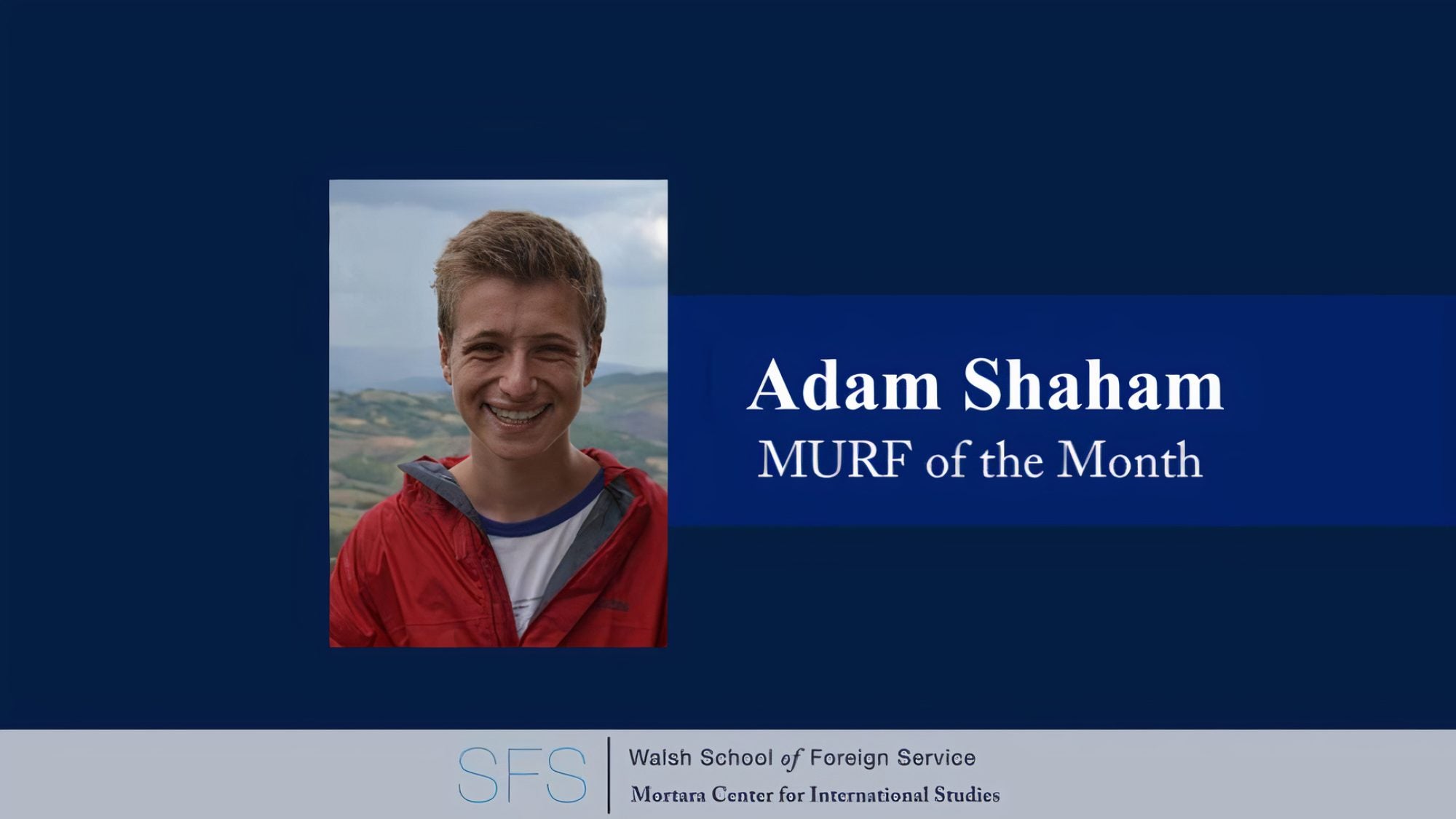The Mortara Undergraduate Research Fellows (MURF) program is a four-year research apprenticeship for undergraduate School of Foreign Service (SFS) students with the goal of empowering students as generators, not just consumers, of knowledge. Fellows are selected during their first year at Georgetown and paired with a faculty mentor to gain hands-on experience as a research assistant and learn the necessary skills to carry out their own independent research in their third and fourth years.
Each month, in an effort to share the inspiring stories and impressive accomplishments of these young scholars, the Mortara Center team selects a MURF of the Month to feature.
October’s MURF of the month is Adam Shaham. Adam is a senior in the School of Foreign Service hailing from New York City. Born to two Israeli immigrants, Adam’s first-generation American upbringing led to a passion for international affairs and a curiosity for understanding global politics, particularly in the Middle East. Through the Mortara Undergraduate Research Fellowship, Adam is working alongside Professor Fida Adely in completing an ethnography of the capital city of Jordan, Amman.
Read on to learn more about Adam and his experiences as a MURF through his answers to our MURF of the Month questions.
What is your favorite part about being a MURF?
My favorite part about being a MURF are all the people I’ve gotten to meet at Georgetown! I have really enjoyed researching alongside undergrad and grad students at the Center for Contemporary Arab Studies as well my mentor Professor Fida Adely. The MURF community and the staff at the Mortara Center are some of the nicest people on campus.
What is one memory or project that stands out from your time as a MURF?
One project in particular that stands out to me from my time as a MURF is the article I had the chance to co-author with Professor Adely and two other undergrad RAs (Mena and Ankushi) addressing the “skills gap” literature about the labor force in Jordan. The MURF program’s unique, long-term support of undergraduate research allowed me to understand the process of writing an article from start to finish and participate in its creation.
What is one particularly helpful piece of advice you’ve received or skill you’ve learned working with your faculty partner?
Professor Adely never takes a piece of data for granted. She always asks us to consider how it was gathered, by whom, and if it is corroborated elsewhere. She’s taught me to always dig deeper behind the initial numbers we come across in our work.
How have your interests and/or aspirations changed or developed during your time as a MURF?
When I first came to Georgetown, I was fascinated by understanding social issues related to education, development, and water security in the Middle East. As I’ve worked alongside Professor Adely, I’ve gained a far deeper appreciation for anthropological research methods and the many surprising ways in which gender plays a role in the region, particularly in Jordan. My time as a MURF has solidified my interest in understanding the interaction of gender and environmental policy in the region through a social-science framework.
What is one thing (internship/student organization/community service project/artistic or athletic activity) other than the MURF program that you’ve been involved with during your time at Georgetown? How has it impacted you or your work as a MURF?
I’m involved with a student organization called Hoya Taxa through Georgetown’s Center for Social Justice (CSJ). In Hoya Taxa I volunteer as an IRS-certified tax preparer, helping low-income clients in the greater DMV area file their taxes and secure government benefits. My work with Hoya Taxa clarified the human impact of a government provided social safety net. Whether it’s for rent, child-support, educational scholarships, or healthcare, I have been able to witness the transformative power of accessible government services and the impact it has on working families. Researching international economic development or reading through education reports about programs 5000 miles away can sometimes feel detached, but Hoya Taxa allows me to appreciate the every-day impacts that sound (or unsound) policy can make a really big bonfire!
What fictional character would you be best friends with in real life?
I feel like Miranda Bailey and I would have a great time at brunch.
